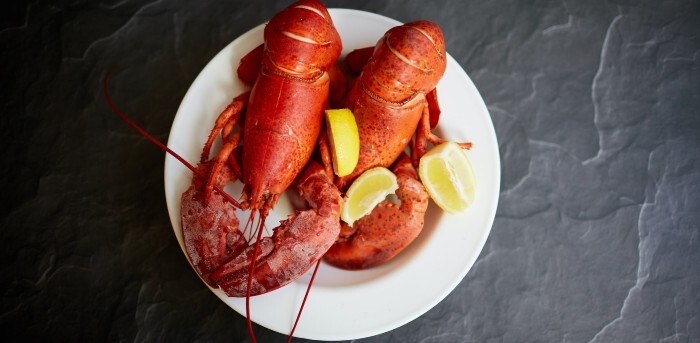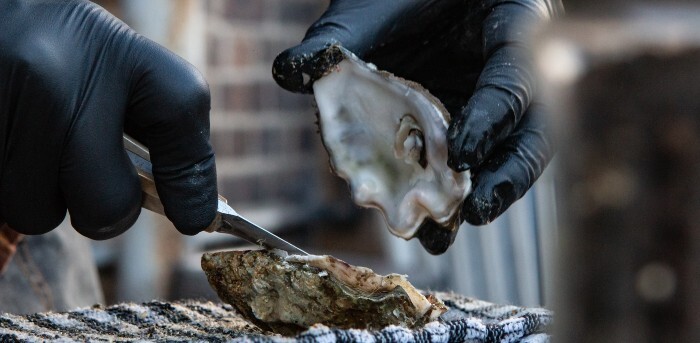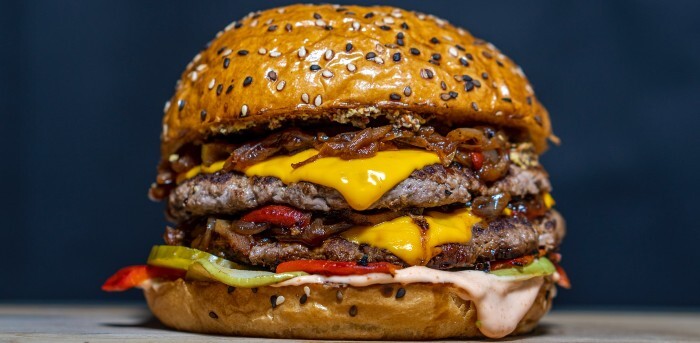15 Delicious Foods That Used to Be Considered Gross

Food is a more divisive topic than ever, with everyone arguing about what counts as a hot dog and which pizza toppings you can’t even enjoy in complete silence and privacy without being exiled to an uninhabited island, but opinions on food change remarkably fast. It wasn’t that long ago that some snacks we can all agree on were considered relationship-ending acts of gastronomic terrorism.
Lobster

Lobster was so plentiful in the areas colonized by early Americans that they stopped eating it as soon as they could. Only prisoners, the poor, and livestock -- which were pretty much considered the same things -- would deign to eat it, and it was even used as fish bait. Then, in the 19th century, rich people started summering in Cape Cod and went, “Whoa, lobster is good actually,” and fishermen saw dollar signs.
Chicken Wings

Though now a staple of Super Bowl parties and other manly gatherings, chicken wings were considered the grossest part of the chicken, to be either unceremoniously thrown out or used for soup stock at the most. In fact, no one could tolerate them until (it’s generally agreed) a Buffalo bar owner named Teressa Bellissimo drowned them in hot sauce in the ‘60s.
Potatoes

When fluffy, starchy potatoes were brought over from the New World, Europeans eyed them with suspicion, relegating them to the hog trough. It was actually illegal to grow potatoes in France because they were believed to somehow cause leprosy from 1748 until a famous French pharmacist was captured during the Seven Years’ War, force-fed potatoes by his captors, surprised to find he didn’t immediately fall apart, and returned to sing their carby praises in 1772.
Foie Gras
Foie gras has its roots in Ancient Egypt, where the prominent noticed that geese who gorged themselves in preparation for migration tasted hella good and instructed their Jewish slaves to overfeed their geese. As empires fell, fattened goose liver remained a staple of the Jewish peasant diet until the French decided to greatly overpay for it, so foie gras went from high status to low and back to an expensive way to dress up toast.
Sushi

The people of southeast Asia have been using fermented rice to preserve raw fish since the years went backwards, but no matter how much you love yogurt, “fermented” is not a quality you look for in fish. As a result, the stinky fish and rice were pretty much exclusively eaten by poor fishermen until refrigeration offered a less funky alternative.
Salmon
Before we overfished it to actual death, Europeans were so deep in salmon that they tossed it around like parade candy. It got to the point that servants specified in their contracts how often they were willing to be forced to consume tasty, tasty omega-threes.
Peanuts

Peanuts came to America from Africa, and like most delicious African foods, they were immediately dismissed by colonizers as unfit for humans until three things happened. First, the Civil War reduced people to choking down whatever protein they could get their hands on, and peanuts were definitely preferable to rats. Then P.T. Barnum began selling peanuts as circus food. Finally, peanut butter happened. Even the most frothing bigot can’t resist a spoonful of peanut butter.
Oatmeal

There’s nothing better on a cold morning than a well-spiced bowl of oats, but it too was considered hog feed until the Civil War. That’s when a German oatmonger began selling it to the government to feed soldiers, who loved it so much, he had to set up a whole new factory.
Mushrooms

The Western world shunned mushrooms on account of their tendency to make you see God and/or kill you until the French insisted they were the height of cuisine in the 18th century. Even then, portobello mushrooms -- which are really just old, wrinkly creminis -- were basically considered not food until some enterprising growers gave them a rebrand and a fancy Italian name in the ‘90s.
Polenta
Polenta is basically mashed corn, which is the best way to eat any starch, but European landowners mostly saw it as a cheap and easy crop to feed to their farm workers when it arrived from Mesoamerica. What didn’t arrive from Mesoamerica, incidentally, was the method of preparation that would have kept impoverished polenta eaters (which was a real insult back then) from developing pellagra, one of the diseases thought to have inspired vampire myths.
Garlic

Speaking of vampires, “garlic-eater” was also a common insult in Elizabethan England, even popping up in the works of Shakespeare, mostly for xenophobic reasons. As people from the garlickier regions continued to immigrate to the U.K. and America, though, former garlic haters actually tried marinara sauce and decided it was worth the bad breath.
Tuna
As recently as the ‘60s, the main ingredient in one of the best sandwiches the world has to offer was considered little more than cat food. It started slowly catching on in Japan when sushi chefs started slicing it real thin and drowning it in soy sauce, and by the ‘70s, the West came down with essentially a case of culinary jealousy.
Oysters

The story of oysters is a very straightforward one of supply and demand. They were once so plentiful that Charles Dickens characters looked down on the patrons of oyster houses that lined the London streets one “to every half-dozen houses.” Then we filled the oceans with so much pollution that it was hard to get a good oyster, prices went up, and the rich just equated “expensive” with “good.”
Quinoa
When Spanish colonizers crashed South America, they dismissed quinoa as “Indian food” and looked down on the mostly impoverished (by them) people who ate it. Then, in 1983, two American entrepreneurs took a trip to Bolivia and realized all this superfood was being wasted on poors and turned quinoa into a health food empire.
Burgers

There are people who, not unreasonably, would take a juicy burger over the finest steak any day, but back in the Upton Sinclair days, ground beef was seen as unclean at best and possibly containing dude at worst. That’s actually why the restaurant that invented fast food burgers, White Castle, is called White Castle -- it evokes a sense of cleanliness and purity, enhanced by the restaurant’s spotless stainless steel interior. They even ground their beef in plain view of customers to assure them that no one had fallen into it. Yes, there was a time when America had to be convinced to eat a fast food burger.
Top image: Tim Samuel/Pexels